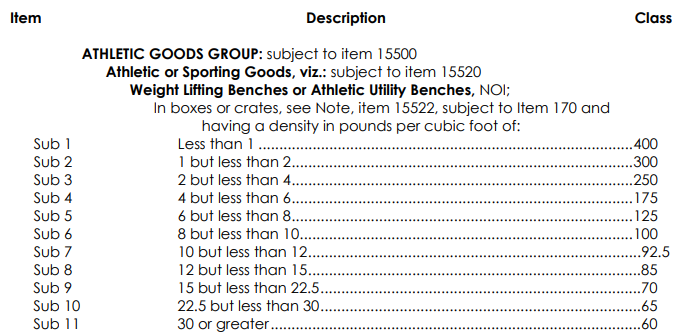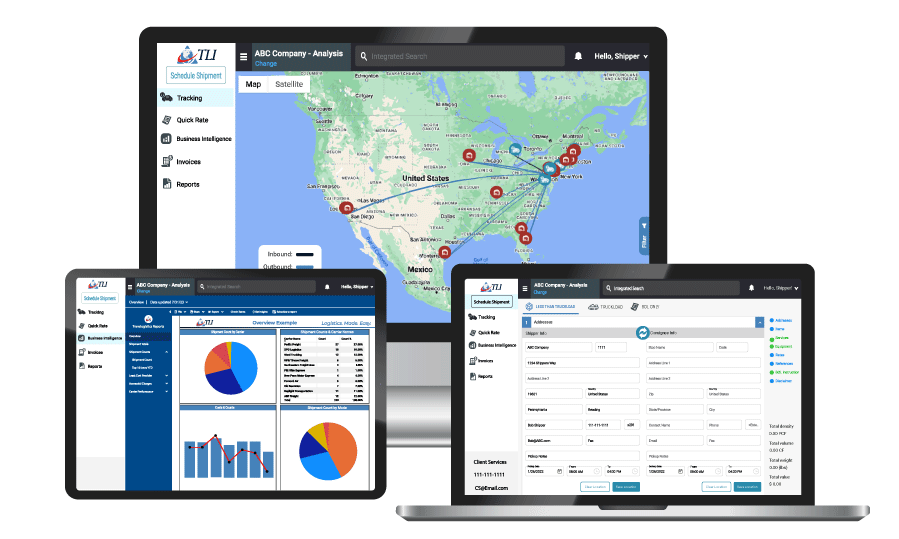Upcoming NMFC Code Changes Set for 2025: TLI is prepared
2025 NMFC Code Changes
What Are NMFC Codes?
The National Motor Freight Classification (NMFC) codes are standardized identifiers used in the freight industry to classify and categorize goods being shipped. These codes play a crucial role in determining shipping costs, ensuring proper handling, and complying with legal transportation regulations. Each product type is assigned a specific NMFC code that reflects its characteristics, such as weight, size, and liability.
The NMFC system was established to simplify freight shipping and promote consistency across the industry. It helps shippers and carriers avoid miscommunication about the items being transported. Each code is essential for calculating shipping rates based on factors like the commodity's density and value. By using these standardized codes, carriers can handle freight more effectively and accurately price transportation services.
NMFC codes assign a specific freight class to commodities based on various attributes, such as density, stowability, and liability. These classes range from 50 to 500, with lower numbers indicating denser, more manageable freight, and higher numbers representing bulkier, lighter, or more fragile items.

Here’s a breakdown of how these classes work:
- Density: The weight per cubic foot (PCF) of an item is a critical factor in determining its class. Denser products generally have lower classes because they are easier to transport.
- Stowability: Some items are easier to load and store due to their shape and size. Items that take up less space or fit easily with other products typically have lower classes.
- Handling: Fragile items that require special handling procedures will have higher freight classes to account for the additional care needed during shipping.
- Liability: Higher-risk items, such as those with greater potential for theft, damage, or perishability, are classified at a higher level.

2025 National Motor Freight Classification Changes
The recent announcement from the National Motor Freight Traffic Association (NMFTA) about upcoming changes to the National Motor Freight Classification (NMFC) will significantly impact all sectors of the freight industry, including carriers, shippers, and third-party logistics providers (3PLs). Set to take effect in early 2025, these changes aim to streamline and modernize the freight classification system, with a strong emphasis on a density-based rating system.
This new approach prioritizes pounds per cubic foot (pcf) as a key factor in determining your actual freight classes.
Understanding pcf—pounds per cubic foot—is crucial, as it measures a product's density based on its weight relative to its volume. In the updated system, commodities will primarily be classified by this metric, promoting standardized, fair, and predictable pricing. The logic behind this shift is clear: higher-density items occupy less space and are easier to handle, resulting in lower transportation costs. This density-based system is designed to reduce friction, and reclassification surcharges among carriers, shippers, and 3PLs by providing clearer and more consistent freight classifications.

We are excited to announce that our ViewPoint TMS platform will be fully aligned with these upcoming changes. It not only complies with the new density-based approach but also features enhanced automation capabilities, such as auto-populating the pcf for shipments. This ensures greater accuracy and efficiency in calculating freight classifications, minimizing errors and simplifying the process.
The NMFTA's changes are intended to benefit everyone involved in freight classification. By simplifying the NMFC through more of a density emphasis while still incorporating handling, stowability, and liability metrics, the freight classification system becomes more user-friendly. As noted by NMFTA leadership, these updates aim to boost rating efficiency and enhance the overall experience for shippers, ensuring that freight is classified correctly from the start.
Nothing to be alarmed about! This change is good!
Some competitors in the 3PL space are engaging in fear-mongering tactics, warning shippers that they will face significantly higher shipping costs due to the upcoming changes to the NMFC system. This alarming narrative is misleading, as our analysis shows that these increases are unlikely to cause rate increases, unless shippers were already quoting their freight incorrectly. In reality, the changes are designed to improve the freight classification process, not complicate it.
The shift to a density-based rating system will actually help reduce reclassification problems. By focusing on pounds per cubic foot (pcf), the new system encourages shippers to optimize their packaging for efficiency. Previously, if freight classes were determined solely by value and weight, there was little incentive to improve packaging. Now, shippers can benefit financially from enhancements in their packaging, as leaner volume of linear space the freight takes up along with more efficient freight class determination methods will lead to lower costs.
One of the main concerns we've heard from shippers is
figuring out how to calculate pcf. Fortunately, our ViewPoint TMS platform
automates this process, making it easy and predictable. Instead of viewing these changes as a hurdle, shippers should see them as an opportunity to improve their logistics strategies. With automated calculations and a clearer classification system, adapting to the new standards will be straightforward, allowing shippers to maximize their efficiency and reduce costs.
We look forward to supporting our partners through this transition and are here to assist with any questions about pcf or freight classifications. Our team is also available to provide training on maximizing the potential of our TMS, ensuring you are well-prepared for the upcoming changes.
As the process unfolds, with phases like Docket 2025-1 implementing these updates, we anticipate a smoother, more streamlined experience that benefits the entire logistics community. This reimagining of the NMFC system represents a forward-thinking initiative that underscores the industry's commitment to continuous improvement and efficiency.
TLI Insights
Get the latest logistics insights and tips from Translogistics’ award-winning team. Stay ahead in transportation planning.
Questions? Email us at marketing@tli.email



